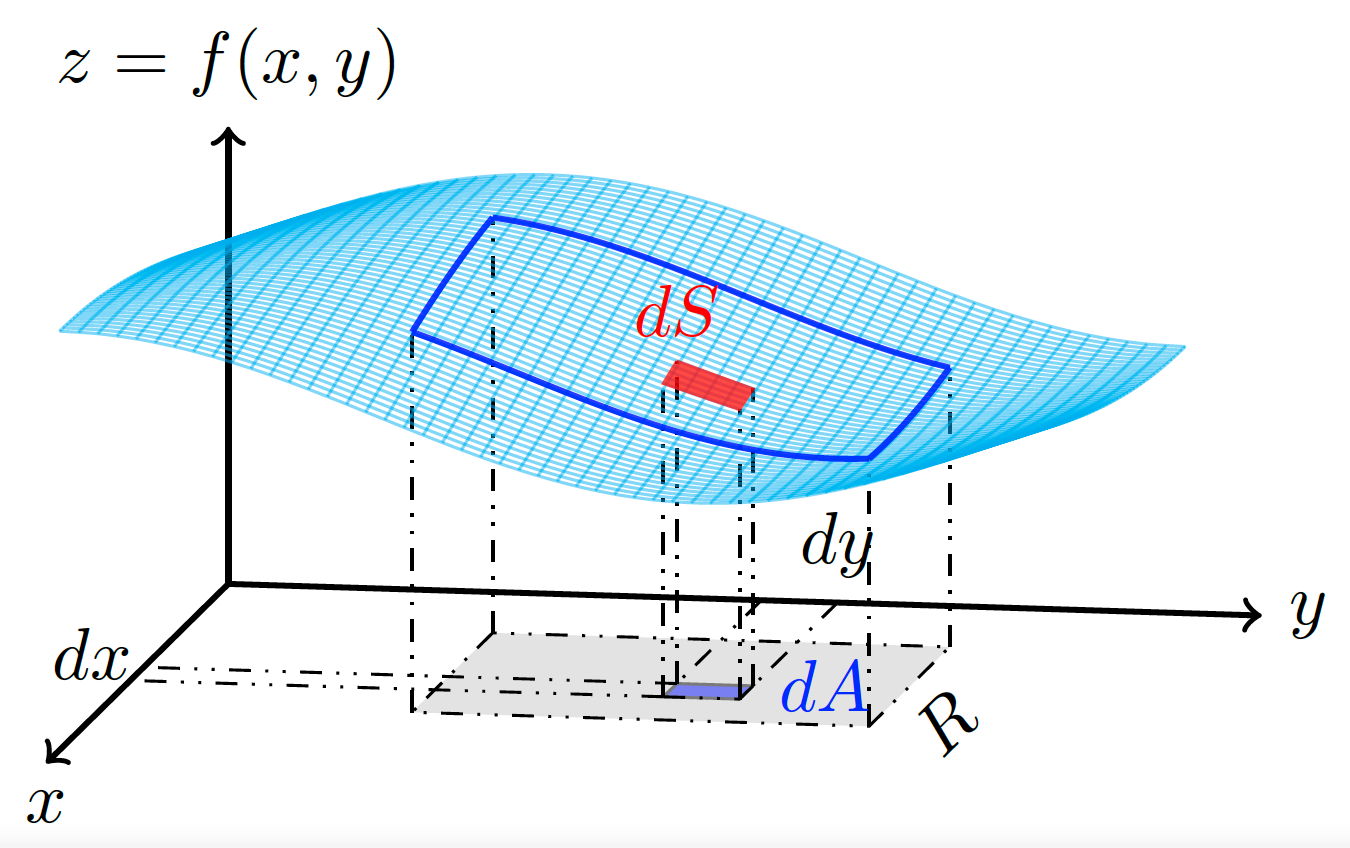Edit and compile if you like:
\documentclass{article}\usepackage{tikz}\usepackage{tikz-3dplot}\usetikzlibrary{math}\usepackage{ifthen}\usepackage[active,tightpage]{preview}\PreviewEnvironment{tikzpicture}\setlength\PreviewBorder{1pt}%% File name: differential-of-surface-area.tex% Description:% A geometric representation of the differential of surface area is shown.%% Date of creation: October, 23rd, 2021.% Date of last modification: October, 9th, 2022.% Author: Efraín Soto Apolinar.% https://www.aprendematematicas.org.mx/author/efrain-soto-apolinar/instructing-courses/% Source: page 120 of the% Glosario Ilustrado de Matem\'aticas Escolares.% https://tinyurl.com/5udm2ufy%% Terms of use:% According to TikZ.net% https://creativecommons.org/licenses/by-nc-sa/4.0/% Your commitment to the terms of use is greatly appreciated.%\begin{document}%\begin{center}\tdplotsetmaincoords{80}{100}%\begin{tikzpicture}[tdplot_main_coords,scale=1.5]% the function $z = f(x,y)$\tikzmath{function funcion(\x,\y) {return 1.125+0.25*sin((0.5*\x + 1.5*\y) r);};}\pgfmathsetmacro{\step}{pi/50.0} % step size\pgfmathsetmacro{\xi}{0} % initial value for x\pgfmathsetmacro{\xf}{1.0*pi} % final value for x\pgfmathsetmacro{\xe}{\xf+\step}\pgfmathsetmacro{\xs}{\xi+\step}\pgfmathsetmacro{\yi}{0} % initial value for y\pgfmathsetmacro{\yf}{1.0*pi} % final value for y
Click to download: differential-of-surface-area.tex • differential-of-surface-area.pdf
Open in Overleaf: differential-of-surface-area.tex
See more on the author page of Efraín Soto Apolinar.


